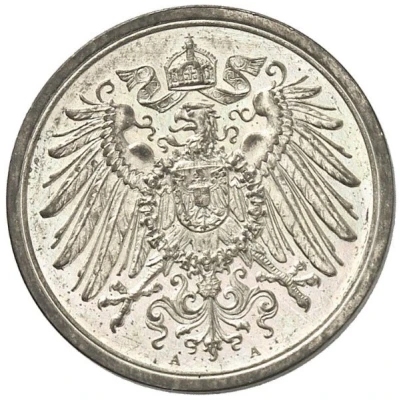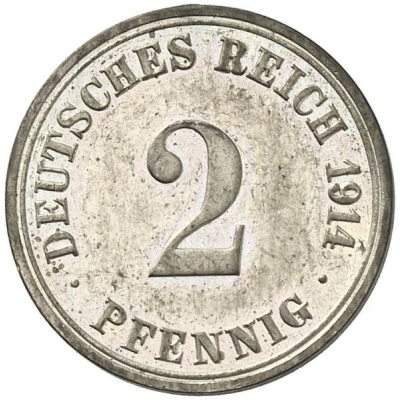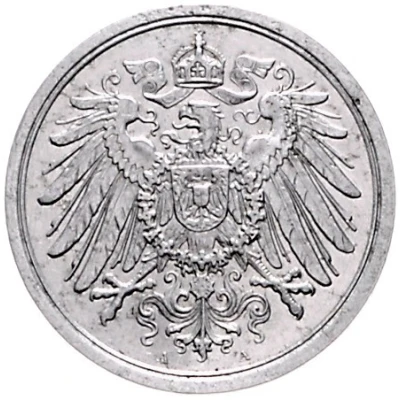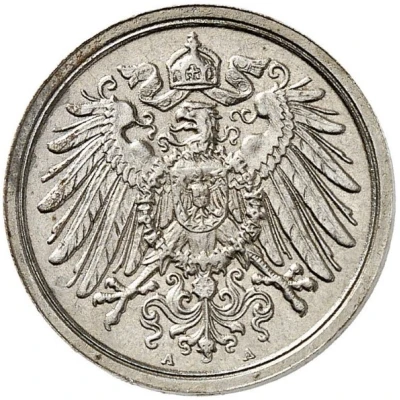
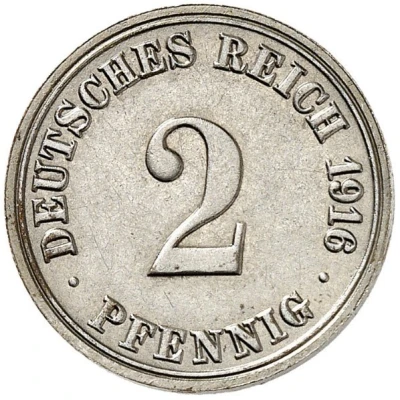

© Fritz Rudolf Künker GmbH & Co. KG, Osnabrück and Lübke & Wiedemann KG, Leonberg
2 Pfennigs - Wilhelm II type 2 - small shield - Pattern
1916 year| Zinc plated iron | 3.41 g | 20.02 mm |
| Issuer | Germany (1871-1948) |
|---|---|
| Emperor | William II (1888-1918) |
| Type | Pattern |
| Year | 1916 |
| Value | 2 Pfennigs (2 Pfennige) (0.02) |
| Currency | Mark (1873-1923) |
| Composition | Zinc plated iron |
| Weight | 3.41 g |
| Diameter | 20.02 mm |
| Shape | Round |
| Technique | Milled |
| Orientation | Medal alignment ↑↑ |
| Demonetized | Yes |
| Updated | 2024-10-05 |
| Numista | N#281347 |
|---|---|
| Rarity index | 95% |
Reverse
Value and date
Script: Latin
Lettering:
DEUTSCHES REICH 1916
2
PFENNIG
Engraver: Emil Weigand
Edge
Plain
Interesting fact
One interesting fact about the Pattern 2 Pfennigs - Wilhelm II (type 2 - small shield - Pattern) 1916 from Germany (1871-1948) made of Zinc plated iron weighing 3.41 g is that it was minted during a time of war. The coin was produced in 1916, during World War I, when Germany was facing economic difficulties and struggled to maintain the value of its currency. As a result, the German government decided to introduce a new coin made of a cheaper material, zinc-plated iron, to replace the previous coin made of silver. This change in material was a significant departure from the traditional silver coins that Germany had been using for centuries and was a direct result of the economic pressures caused by the war. Despite the change in material, the coin still featured the iconic image of Wilhelm II, the German Emperor, on one side and the German eagle on the other, symbolizing the country's national pride and identity.
